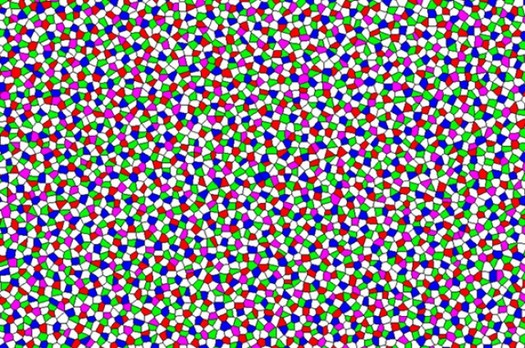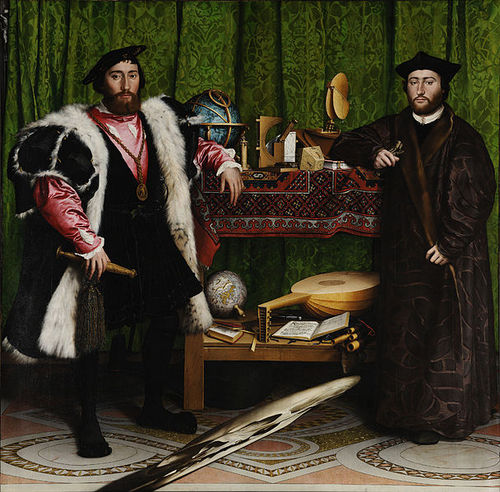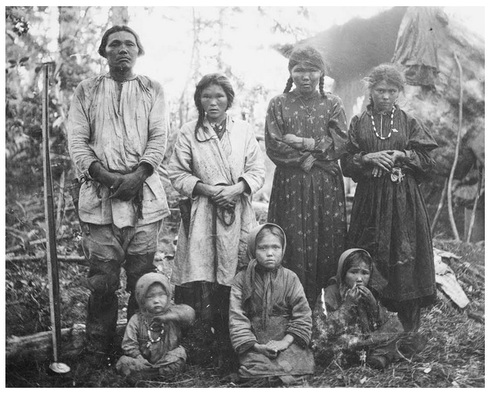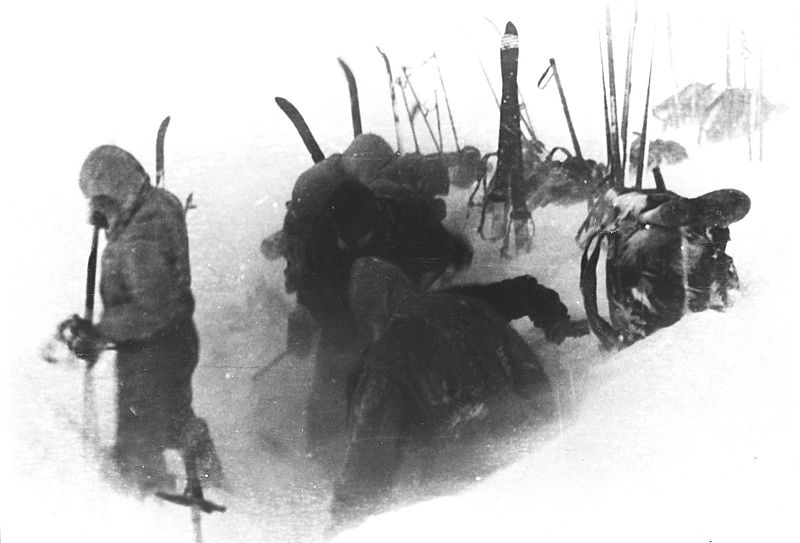If you ever wondered what happens when lava meets ice, here's your answer! ~Ally
0 Comments
If you were a new state of matter, where would you be? If you said in the retina of chickens, you're right! The retina of the eye is home to rods and a variety of cones, which help the brain perceive color. When studying the retina of the chicken, researchers found that the five different types of cones are arranged in what is known as “disordered hyperuniformity” and has never before been seen in biology until now. The research was co-led by Salvatore Torquato and Joseph Corbo and was published in Physical Review E. When a small section of the pattern is viewed, the position of the individual components (in this case, the different types of cones) appears to be random. On the large scale, there appears to be more some order to the perceived madness. This hyperuniform state of matter has been seen before in plasmas and liquid helium (which occurs at -269 degrees C, -450 degrees F) and allows the substance to act both as a crystal and a liquid. Because the different types of cones are different sizes, this arrangement allows the retina to take on the crystal-like ability of maintaining the density throughout. However, all of the cones also have the same physical properties, just like a liquid. Chickens and other birds depend on acute eyesight, which is aided by their five types of photoreceptive cells that are densely packed into the retina. It is speculated that this ordered arrangement lends to the integrity of the retina while allowing them to perceive light and colors evenly. Each type of cone has a set pattern that, when viewed individually, appears pretty obvious. When all of the patterns are put together, it has a very complicated order that is described as a “uniform disarray.” Each cone appears to have a zone around it which helps space out cones of the same type. This is a multi-hyperuniformity that has not been seen before, and the researchers believe it calls for a new state of matter to be used to describe it. Beyond just being a neat fact about avian vision, disordered hyperuniformity is used to develop optical circuits which operate or restrict based on certain wavelengths. Now that this type of patterning has been found in a biological system, the field may be expanded in future research. Researchers hope that other scientists will go back and reexamine old data to determine if there are more instances of disordered hyperuniformity that may have gone unnoticed. ~Ally
Scientists claim that Australia was once inhabited by 2m tall carniverous kangaroos, but all living species are considered herbivores. However, reports of scavenging surface from time to time, and as this footage shows, once they start, some kangaroos are not keen to stop, even when interrupted. So much for their typical vegan dinner! ~Ally
If you ever wondered who would win a fight between a snake and a crocodile, now you have the answer. I wouldn't get near Australian waters if I were you. ~Ally
I remember hearing about folios a long time ago, but couldn't quite recall what they were... So it's time to dig! The term "folio", from the Latin folium (leaf), apparently has three interconnected but distinct meanings in the world of books and printing. It is firstly a term for a common method of arranging sheets of paper into book form, folding the sheet only once, and a term for a book made in this way. Secondly it is a general term for a sheet, leaf or page in (especially) manuscripts and old books, and thirdly an approximate term for the size of a book, and for a book of this size. Firstly a folio (abbreviated fo or 2°) is a book or pamphlet made up of one or more full sheets of paper, on each of which four pages of text are printed, two on each side; each sheet is then folded once to produce two leaves. Each leaf of a folio book thus is one half the size of the original sheet. Ordinarily, additional printed folio sheets would be inserted inside one another to form a group or "gathering" of leaves prior to binding the book. Secondly "folio" is used in terms of page numbering for some books and most manuscripts that are bound but without page numbers as an equivalent of "page" (both sides), "sheet" or "leaf", using recto and verso to designate the first and second sides, and (unlike the usage in printing) disregarding whether the leaf concerned is actually physically still joined with another leaf. This usually appears abbreviated: "f26r." means the first side of the 26th leaf in a book. This will be on the right hand side of the opening of any book composed in a script that is read from left-to-right, such as Latin (as used in English), Cyrillic, or Greek, and will be opposite for books composed in a script that is read from right-to-left, such as Hebrew and Arabic. Thirdly folio is also used as an approximate term for a size of book, typically about 15 inches (38 cm) tall, and as such does not necessarily indicate the actual printing format of the books, which may even be unknown as is the case for many modern books. Other common book formats are quarto and octavo, which are both also printing formats, involving two and three folds in the sheet respectively. Famous folios (in both senses) include the Gutenberg Bible, printed in about 1455, and the First Folio collected edition of Shakespeare's plays, printed in 1623; however their actual size is rather different. ~Ally
Thank the Greeks, Edyptians and Romans for you presents, cake and baloons every single year of your life - unless you're a really grumpy person, or cat. Anyway, the tradition of celebrating someone's day of birth does back to 3000 years, and was first developed in Egypt and Greece, in order to commemorate pharao's and god's. The Romans, later, used it to celebrate the day of birth of emperors and their families. When Christianity became strong, the Church abolished birthday parties as a whole but, since they insisted on celebrating Christ's birthday every year from the fourth century on - hence Christmas -, the tradition found its way back into daily life. It's cool to know some of the things that came from that time: the custom to put candles on top of cakes, for example, came from Greece, where it represented the Godess Artemis and her full moon. The first baloons were made out of dead animals' viscera, and even back then they were used to entertain kids. To give presents to the birthday person is a custom we inherited from Greeks and Egyptians; they were used in the past, however, to depart evil spirits. Common gifts were myrrh and frankincence. ~Ally
Another word I didn't know the meaning! A syllogism is a kind of logical argument in which one proposition (the conclusion) is inferred from two or more others (the premises) of a specific form. In antiquity, two rival theories of the syllogism existed: Aristotelian syllogistic and Stoic syllogistic. Aristotle defined the syllogism as, "...a discourse in which certain (specific) things having been supposed, something different from the things supposed results of necessity because these things are so." Despite this very general definition, in Aristotle's work Prior Analytics, he limits himself to categorical syllogisms that consist of three categorical propositions. These include categorical modal syllogisms. From the Middle Ages onwards, categorical syllogism and syllogism were usually used interchangeably. The syllogism was at the core of traditional deductive reasoning, where facts are determined by combining existing statements, in contrast to inductive reasoning where facts are determined by repeated observations. Within academic contexts, the syllogism was superseded by first-order predicate logic following the work of Gottlob Frege, in particular his Begriffsschrift (Concept Script) (1879), but syllogisms remain useful in some circumstances, and for general-audience introductions to logic. There are infinitely possible syllogisms, but they're basic structure consists of three parts: a major premise, a minor premise and a conclusion. Each part is a categorical proposition, and each categorical proposition contains two categorical terms. In Aristotle, each of the premises is in the form "All A are B," "Some A are B", "No A are B" or "Some A are not B", where "A" is one term and "B" is another. "All A are B," and "No A are B" are termed universal propositions; "Some A are B" and "Some A are not B" are termed particular propositions. More modern logicians allow some variation. Each of the premises has one term in common with the conclusion: in a major premise, this is the major term (i.e., the predicate of the conclusion); in a minor premise, it is the minor term (the subject) of the conclusion. For example: Major premise: All humans are mortal. Minor premise: All Greeks are humans. Conclusion: All Greeks are mortal. Each of the three distinct terms represents a category. In the above example, humans, mortal, and Greeks. Mortal is the major term, Greeks the minor term. The premises also have one term in common with each other, which is known as the middle term; in this example, humans. Both of the premises are universal, as is the conclusion. Uff, I feel a little knot in my brain. Don't you? Just kidding! Or am I? Wait, what? ~Ally
Watching "Fact or Faked: Paranormal Files" (one of my favotire tv shows) the other day, I heard a word I didn't know: anamorphosis. It helped the researchers in the show to recreate a human silhouette in a couple of wooden boxes, resembling a ghost in a picture. So here's how it works! Anamorphosis is defined as a distorted projection or perspective requiring the viewer to use special devices or occupy a specific vantage point to reconstitute the image. The word "anamorphosis" is derived from the Greek prefix ana-, meaning back or again, and the word morphe, meaning shape or form. There are two main types of anamorphosis: perspective (oblique) and mirror (catoptric). Examples of perspectival anamorphosis date to the early Renaissance (fifteenth century), but examples of mirror anamorphosis were first created in the late Renaissance (sixteenth century). With mirror anamorphosis, a conical or cylindrical mirror is placed on the drawing or painting to transform a flat distorted image into a three-dimensional picture that can be viewed from many angles. The deformed image is painted on a plane surface surrounding the mirror. By looking uniquely into the mirror, the image appears undeformed. This process of anamorphosis made it possible to diffuse caricatures, erotic and scatological scenes and scenes of sorcery for a confidential public. Cinemascope, Panavision, Technirama and other widescreen formats use anamorphosis to project a wider image from a narrower film frame. The system of anamorphic projection can be seen quite commonly on text written at a very flat angle on roadways, such as "Bus Lane" or "Children Crossing", which is easily read by drivers who otherwise would have difficulty reading as the vehicle approaches the text; when the vehicle is nearly above the text, its true abnormally elongated shape can be seen. Similarly, in many sporting stadiums, especially in Rugby football in Australia and Soccer in Brazil, it is used to promote company brands which are painted onto the playing surface; from the television camera angle, the writing appear as signs standing vertically within the field of play. Even on some 0.5 liter Sprite bottles in Europe, an extra "bar code" was present. When the bottle is tilted towards the mouth while drinking, the bar code resolves into writing due to the anamorphic effect. Finally, much writing on shop windows is in origin anamorphic, as it was written mirror-reversed on the inside of the window glass. ~Ally
Yesterday I wrote about the incident in the Dyatlov Pass and mentioned the Mansi people. However, I've never heard or read about them until now, so let's dig in! Mansi (referred to in the past as Voguls) are an endangered indigenous people living in Khanty–Mansia, an autonomous okrug (an administrative division of Slavic states) within Tyumen Oblast in Russia. They speak Khanty and Mansi languages, which have co-official status with Russian. Together with the Khanty people (another indigenous folk from that region), the Mansi are politically represented by the Association to Save Yugra, an organisation founded during the Perestroika of the late 1980s. This organisation was among the first regional indigenous associations in Russia. The ancestors of Mansi people populated the areas west of the Urals, and Mansi findings have been unearthed in the vicinity of Perm. In the first millennium BC, they migrated to Western Siberia where they assimilated with the native inhabitants. According to others they are originated from the south Ural steppe and moved into their current location about 500 AD. The Mansi have been in contact with the Russian state at least since the 16th century when most of western Siberia was brought under Russian control by Yermak Timofeyevich. Due to their higher exposure to Russian and Soviet control, they are generally more assimilated than their northern neighbours, the Khanty. In the 1960s, exploitation of the rich oil deposits of Khanty–Mansi Autonomous Okrug began, causing the Soviet Union's largest internal migration wave since the Second World War. This led to a dramatic marginalisation of the Mansi and Khanty who today constitute slightly more than one percent of the district's population. ~Ally
It is one of the creepiest real stories I've ever heard. The "Dyatlov Pass incident" refers to the mysterious deaths of nine ski hikers in the northern Ural mountains (Russia) on the night of February 2, 1959 (crap, I didn't know about this date! Things just got even creepier!). The incident happened on the east shoulder of the mountain Kholat Syakhl (a Mansi name, meaning Dead Mountain). The mountain pass where the incident occurred has since been named Dyatlov Pass after the group's leader, Igor Dyatlov. The lack of eyewitnesses has inspired much speculation. Soviet investigators simply determined that "a compelling natural force" had caused the deaths. Access to the area was barred for skiers and other adventurers for three years after the incident. The chronology of the incident remains unclear because of the lack of survivors. Investigators at the time determined that the hikers tore open their tent from within, departing barefoot into heavy snow and a temperature of −30 °C (−22 °F). Although the corpses showed no signs of struggle, two victims had fractured skulls, two had broken ribs, and one was missing parts of her face due to postmortem decay. The group was formed for a ski trek across the northern Urals in Sverdlovsk Oblast. Led by Igor Dyatlov, consisted of eight men and two women. Most were students or graduates of Ural Polytechnical Institute, now Ural Federal University. The goal of the expedition was to reach Otorten, a mountain 10 kilometres (6.2 mi) north of the site of the incident. This route, at that season, was estimated as "Category III", the most difficult. All members were experienced in long ski tours and mountain expeditions. The group arrived by train at Ivdel, a city at the center of the northern province of Sverdlovsk Oblast on January 25. They then took a truck to Vizhai – the last inhabited settlement so far north. They started their march toward Otorten from Vizhai on January 27. The next day, one of the members (Yuri Yudin) was forced to go back because of illness. The group now consisted of nine people. Diaries and cameras found around their last camp made it possible to track the group's route up to the day preceding the incident. On January 31, the group arrived at the edge of a highland area and began to prepare for climbing. In a wooded valley they cached surplus food and equipment that would be used for the trip back. The following day (February 1), the hikers started to move through the pass. It seems they planned to get over the pass and make camp for the next night on the opposite side, but because of worsening weather conditions, snowstorms and decreasing visibility, they lost their direction and deviated west, upward towards the top of Kholat Syakhyl. When they realized their mistake, the group decided to stop and set up camp there on the slope of the mountain rather than moving 1.5 kilometres (0.93 mi) downhill to a forested area which would have offered some shelter from the elements. Yuri Yudin, the lone survivor, postulates that "Dyatlov probably did not want to lose the altitude they had gained, or he decided to practice camping on the mountain slope. " It had been agreed beforehand that Dyatlov would send a telegram to their sports club as soon as the group returned to Vizhai. It was expected that this would happen no later than February 12, but Dyatlov had told Yudin that he expected to be longer, and so when this date passed and no messages had been received, there was no reaction – delays of a few days were common in such expeditions. Only after the relatives of the travelers demanded a rescue operation did the head of the institute send the first rescue groups, consisting of volunteer students and teachers, on February 20. Later, the army and militsiya forces became involved, with planes and helicopters being ordered to join the rescue operation. On February 26, the searchers found the abandoned and badly damaged tent on Kholat Syakhl. Mikhail Sharavin, the student who found the tent, said "the tent was half torn down and covered with snow. It was empty, and all the group's belongings and shoes had been left behind." Investigators said the tent had been cut open from inside. A chain of eight or nine sets of footprints, left by several people who were wearing only socks, a single shoe or were barefoot, could be followed and led down toward the edge of nearby woods (on the opposite side of the pass, 1.5 kilometres (0.93 mi) north-east), but after 500 metres (1,600 ft) they were covered with snow. At the forest edge, under a large cedar, the searchers found the remains of a fire, along with the first two bodies, those of Yuri Krivonischenko and Yuri Doroshenko, shoeless and dressed only in their underwear. The branches on the tree were broken up to five meters high, suggesting that a skier had climbed up to look for something, perhaps the camp. Between the cedar and the camp the searchers found three more corpses, Dyatlov, Zina Kolmogorova and Rustem Slobodin, who seemed to have died in poses suggesting that they were attempting to return to the tent. They were found separately at distances of 300, 480 and 630 meters from the tree. Searching for the remaining four travelers took more than two months. They were finally found on May 4 under four meters of snow in a ravine 75 meters farther into the woods from the cedar tree. These four were better dressed than the others, and there were signs that those who had died first had apparently relinquished their clothes to the others. Zolotaryov was wearing Dubinina's faux fur coat and hat, while Dubinina's foot was wrapped in a piece of Krivonishenko's wool pants. A legal inquest started immediately after finding the first five bodies. A medical examination found no injuries which might have led to their deaths, and it was concluded that they had all died of hypothermia. Slobodin had a small crack in his skull, but it was not thought to be a fatal wound. An examination of the four bodies which were found in May changed the picture. Three of them had fatal injuries: the body of Thibeaux-Brignolles had major skull damage, and both Dubinina and Zolotarev had major chest fractures. According to Dr. Boris Vozrozhdenny, the force required to cause such damage would have been extremely high. He compared it to the force of a car crash. Notably, the bodies had no external wounds related to the bone fractures, as if they were crippled by a high level of pressure. Major external injuries were, however found on Dubinina, who was missing her tongue, eyes, and part of the lips, facial tissue and a fragment of skullbone; however, as she had been lying face-down in a small stream that ran under the snow for weeks and also had extensive skin maceration on the hands, her external injuries are in line with putrefaction in a wet environment and unlikely to be related to her death. There had initially been some speculation that the indigenous Mansi people might have attacked and murdered the group for encroaching upon their lands, but investigation indicated that the nature of their deaths did not support this hypothesis; the hikers' footprints alone were visible, and they showed no sign of hand-to-hand struggle. Although the temperature was very low, around −25 to −30 °C (−13 to −22 °F) with a storm blowing, the dead were only partially dressed. Some of them had only one shoe, while others had no shoes or wore only socks. Some were found wrapped in snips of ripped clothes that seemed to have been cut from those who were already dead. Many theories have arisen about the event, from paranormal activity to secret weapons tests, but avalanche damage is considered one of the more plausible explanations for this incident. One scenario under this theory is that moving snow knocked down the tent, ruining the campsite in the night. The party then cut themselves free and mobilized. The snow would likely have contacted them and possibly ruined their boots and extra clothing. Being covered in wet snow in the sub-freezing temperatures created a serious hazard to survival, with exhaustion or unconsciousness from hypothermia possible in under 15 minutes. Thibeaux-Brignolles, Dubinina, Zolotariov, and Kolevatov were moving farther from the site to find help despite their remote location when they fell in the ravine where they were found – three of these bodies had major fractures. Being the only bodies with major injuries and lying 13 feet deep in a ravine could be considered evidence that they fell. One supporting factor for this theory is that avalanches are not uncommon on any slope that can accumulate snow. Despite claims that the area is not prone to avalanches, slab avalanches do typically occur in new snow and where people are disrupting the snowpack. On the night of the incident, snow was falling, the campsite was situated on a slope, and the campers were disrupting the stability of the snowpack. The tent was also halfway torn down and partially covered with snow – all of which could support the theory of a small avalanche pushing snow into the tent. Possibly negating the avalanche scenario would be that the investigators saw footprints leading from the campsite, and no obvious avalanche damage was noted. However, the footprints could have been preserved if there was no precipitation in the 25 days before the site was discovered and the supposed avalanche happened after most of the snow fell. Another theory is that wind going around the Holatchahl mountain created a Kármán vortex street, which resulted in infrasounds that have effects on humans. In my opinion, the aliens are to blame. ~Ally
|







 RSS Feed
RSS Feed